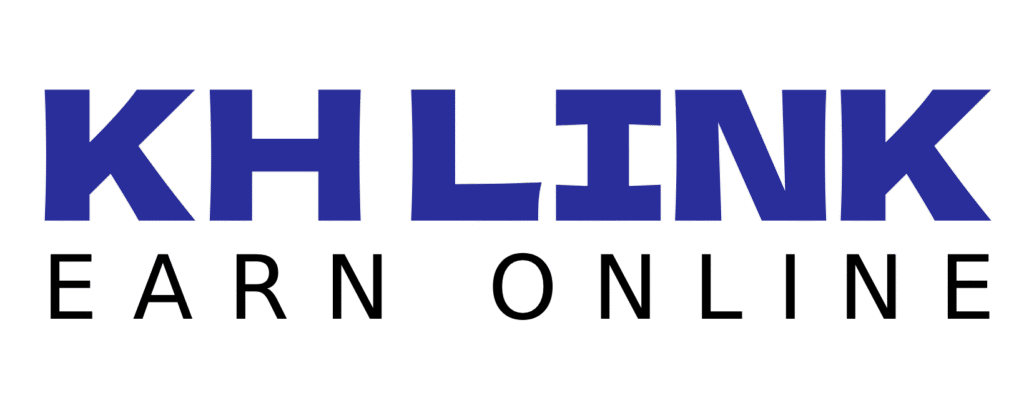How to Start Using AI Powered Print on Demand to Make Money Passively
The concept of earning money with minimal ongoing effort—passive income—has never been more appealing. Anyone with a little bit of knowhow and creativity can profit from the growth of print on demand (POD) businesses and advancements in artificial intelligence (AI). This comprehensive 1500word guide will walk beginners through the process of building a successful AIpowered print on demand business to generate passive income. From understanding the basics to leveraging AI tools and scaling your venture you’ll find actionable steps to get started.
How does Print on Demand work?
Print on demand is a business model where products like tshirts mugs hoodies posters and phone cases are printed and shipped only after a customer places an order. You don’t have to hold inventory or invest in bulk stock up front unlike traditional retail. Instead a thirdparty supplier handles production and fulfillment while you design the products and list them on an online store. The beauty of POD lies in its simplicity and low risk. It’s an ideal entry point for beginners looking to start an ecommerce business without significant capital. You can make design creation market research and customer targeting even more efficient and profitable by integrating AI tools.
Why Use AI in Print on Demand?
AI has revolutionized the POD industry by automating timeconsuming tasks and enhancing creativity. Here’s why AI is a gamechanger:
- Design Automation: AI tools can generate unique designs based on trends keywords or customer preferences saving hours of manual work.
- Market Research: AI analyzes consumer behavior trending niches and competitor strategies to help you target profitable markets.
- Marketing Optimization: AIdriven tools create compelling ad copy optimize social media campaigns and personalize customer experiences.
- Efficiency: Automating repetitive tasks frees you up to concentrate on growing your business.
In the POD market even individuals with no prior experience in design or marketing can compete with AI. Let’s get started with the detailed procedure for launching your AIpowered POD business now.
monetizing a micro niche blog about gardening
Step 1: Choose Your Niche
A niche is a specific segment of the market you’ll target with your designs. To stand out in the crowded POD market you need to pick the right niche. Using AI you can find a profitable niche:
- Utilize Artificial Intelligence (AI) Market Research Tools: Platforms such as Helium 10 Jungle Scout or AMZScout (adapted for POD) can examine ecommerce trends. Input keywords related to your interests (e.g. “yoga” “dog lovers” “gaming”) to identify highdemand lowcompetition niches.
- Leverage Social Media Insights: Tools like Brand24 or BuzzSumo track trending topics on platforms like Instagram TikTok and X. For example if “retro gaming” is trending you could create designs featuring pixel art or classic game quotes.
- Validate Your Niche: Use Google Trends to confirm sustained interest in your niche. To gauge competition and pricing search for products that are comparable on Amazon Merch Redbubble or Etsy.
Examples of Niches:
- Pet owners (for instance “Proud Cat Mom” clothing)
- Hobbyists (such as products related to fishing knitting or hiking)
- Pop culture fans (e.g. designs inspired by TV shows or memes ensuring no copyright infringement)
Pro Tip: Avoid overly broad niches like “fitness.” Instead narrow it down to “yoga moms” or “crossfit enthusiasts” for better targeting.
Step 2: Setup Your Print on Demand Store
It’s time to build your online store after picking a niche. Here’s how to get started:
- Choose a POD Platform: The following platforms are popular:
- Printful: Offers a wide range of products and integrates with most ecommerce platforms.
- Printify: Known for competitive pricing and global suppliers.
- Redbubble/Teepublic: Marketplacestyle platforms where you upload designs and they handle sales and fulfillment.
- TeeSpring (Spring): Best for creators who have a lot of followers on social media.
Pick a platform based on the variety of products delivery times and integration options.
- Set up a store on an ecommerce platform for complete control:
- Shopify: Userfriendly with robust POD integrations (starting at $29/month).
- WooCommerce: A free WordPress plugin for people who know how to manage websites.
- Etsy: Great for beginners with a builtin audience but higher fees.
If you prefer a market approach you could also use Redbubble or Teepublic.
- Create a professional brand identity for your store by designing a unified storefront and a logo (using AI tools like Looka or Canva).
- Set competitive prices (typically $15–30 for tshirts taking into account production costs and profit margins) and write compelling product descriptions.
Step 3: Use AI Tools to Make Designs
AI really shines when it comes to design. You don’t have to be an artist to make graphics that grab attention. Here’s how to leverage AI design tools:
- Generators for AI Design:
- MidJourney: Based on text prompts generates highquality editable artwork such as “vintage dog illustration minimalist style.” Plans cost just $10 per month.
- DALLE 3: Accessible through ChatGPT Plus ($20 per month) this tool makes individual images from text descriptions.
- Canva Pro: Offers AIpowered design suggestions and templates for quick edits ($12.99/month).
- Adobe Firefly: Ideal for professionalgrade designs with AI enhancements (part of Adobe Creative Cloud).
- Tips on Design:
- For apparel keep designs simple and striking using colors with a high contrast.
- Avoid content that is protected by copyright like band logos or Disney characters.
- Make use of current catchphrases or slogans that are pertinent to your sector such as “Powered by Coffee” for office workers.
- Test multiple design variations to see what resonates with your audience.
- Example of a Workflow:
- Create a base design using MidJourney such as “retro sunset with a dog silhouette.”
- Edit in Canva to add text or tweak colors.
- For POD compatibility download in highresolution PNG format with a transparent background.
Step 4: Upload Your Products and Optimize Them
With designs ready upload them to your chosen POD platform. Follow these steps to maximize sales:
- Start with popular merchandise like mugs hoodies and tshirts. Expand to niche products (e.g. pet bandanas or tote bags) as you grow.
- Mockups: Use the POD platform’s mockup generator or Placeit.net to create professional product images showcasing your designs.
- SEO Improvement:
- Write descriptive titles (e.g. “Funny Dog Lover TShirt for Pet Owners”).
- In your descriptions use relevant keywords like “dog mom gift” or “cute pet apparel.”
- Add tags to improve discoverability on marketplaces like Etsy or Redbubble.
- Pricing Strategy: Price products to cover production costs (e.g. $7–12 for a tshirt) platform fees and leave room for profit (aim for 30–50% margins).
Step 5: Market Your Store
Marketing is essential for increasing sales and traffic. AI tools can simplify and enhance your efforts:
- Social Media Marketing:
- Use AI tools like Hootsuite or Buffer to schedule posts on Instagram TikTok and Pinterest.
- Create short videos showcasing your products (use CapCut with AIgenerated captions).
- Engage in conversation with specialized groups on X or Reddit such as r/doglovers for petthemed designs.
- Paid Ads:
- Utilize Meta’s AIdriven ad manager to target your niche and run ads on Facebook or Instagram (start with a $5–10/day budget).
- Use Google Ads for keywordtargeted campaigns (e.g. “funny yoga tshirts”).
- Email Marketing:
- Build an email list with Mailchimp or Klaviyo (offer a discount for signups).
- Send personalized emails with product recommendations generated by AI.
- Influencer Collaborations:
- Partner with microinfluencers in your field such as fitness coaches or pet bloggers.
- Find influencers whose audiences are engaged by making use of tools like Upfluence.
Step 6: Automate and Scale
To make your POD business truly passive automate as much as possible:
- Automate Order Fulfillment: POD platforms handle printing and shipping so you only need to monitor orders for issues.
- Make use of AI chatbots: Set up a chatbot like Tidio in your store to answer questions from customers roundtheclock.
- Outsource Tasks: Hire freelancers on Fiverr or Upwork for design tweaks or ad management as your business grows.
- Expand Your Catalog: Regularly add new designs and products to keep your store fresh. Make the most of the bestselling products by utilizing AI to analyze them.
Scaling Tips:
- Test new niches to diversify income streams.
- Expand to multiple platforms such as simultaneously selling on Etsy Shopify and Redbubble.
- Reinvest profits into ads or premium AI tools for faster growth.
Step 7: Monitor and Optimize
To guarantee longterm success monitor the performance of your store:
- Analytics Tools: To track traffic conversion rates and the bestperforming products use Shopify’s builtin dashboard or Google Analytics.
- Feedback from Customers: Respond to reviews and make use of the feedback to enhance designs or customer service.
- AIDriven Insights: To stay ahead of the curve tools like Sell The Trend and Ecomhunt provide data on popular products and niches.
Avoidable Mistakes to Avoid
- Ignoring Copyrights: Always create original designs or use licensed assets to avoid legal issues.
- Poor Quality Designs: Invest time in creating or refining AIgenerated designs to ensure they’re printready.
- Neglecting Marketing: Without promotion even the best designs will not sell.
- Overpricing: Studying your competitors in order to set prices that are competitive and entice buyers.
Expected Earnings and Timeline
Earnings vary based on effort niche and marketing. Beginners can expect:
- Months 1 through 3: $0–500 while you construct your store and test designs.
- Months 4 through 6: $500 to $2000 with regular marketing and optimized listings.
- Year one and up: $2000 to $10000 per month with scaleddown operations.
This guide provides a roadmap to launching a profitable AIpowered print on demand business. By leveraging automation and AI tools you can create a sustainable passive income stream with minimal ongoing effort. Start small test relentlessly and scale strategically to maximize your earnings.

